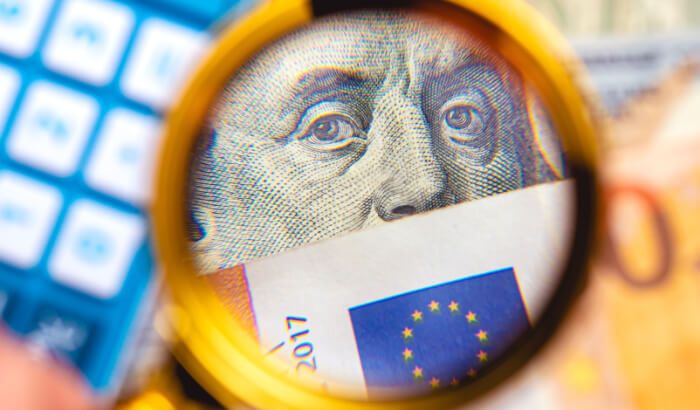Tuesday Sep 26 2023 16:48

8 min

The euro (EUR/USD)has fallen below the $1.06 level, marking its lowest point since mid-March. This decline is attributed to growing indications that the European Central Bank (ECB) may put a halt to its series of interest rate hikes.
The ECB is shifting its focus towards addressing concerns about an economic slowdown, which have taken precedence over worries about inflation. Market sentiment has shifted to not expecting any more rate increases this year, and there's even speculation of a potential rate cut by next June, with a rate reduction being largely anticipated by July.
In a statement on Monday, ECB President Christine Lagarde indicated that policymakers believe the bank's current policy rates would stay restrictive for as long as necessary.
ECB board member Villeroy de Galhau, however, suggested the ECB needed to be cautious and avoid pushing the economy to the brink, avoiding a “hard landing”, which implied a preference for not raising rates further.
"’Testing until it breaks' is not a sensible way to calibrate monetary policy," he said. "This suggests that we should now focus on the persistence of policy rather than the constant pushing of rates higher – duration rather than level."
Nonetheless, certain policymakers have hinted that an interest rate hike could still be on the table, given the persistent high inflation in the eurozone. In August, eurozone inflation stood at 5.2%, — well above the ECB's target of 2%.
The euro is also facing pressure from renewed strength in the U.S. dollar (USDX), bolstered by the Federal Reserve’s commitment to another rate hike before the end of the year. On Monday, two Fed officials, Chicago Fed President Austan Goolsbee and Minneapolis Fed President Neel Kashkari, both reiterated the central bank’s intention to keep interest rates “higher for longer".
The U.S. dollar index has gained close to 1% on the news, trading relatively flat close to the 106 level during trading on Tuesday.
Long-term U.S. Treasury bond yields have also soared, with ten-year U.S. Treasury yields suring by 25 basis points within a single week, reaching a new 16-year high of 4.5660% early on Tuesday.
According to Deutsche Bank, this level holds historical significance, considering that the average 10-year yield dating back to 1799 has been around 4.50%.
Thirty-year U.S. Treasury bond yields saw an increase of over 30 basis points in just one week, soaring to a 12-year high of 4.6840%.
Private sector bankers are starting to brace for the worst, with JP Morgan chief Jamie Dimon reported overnight as warning:
"Going from zero to 2% was almost no increase. Going from zero to 5% caught some people off guard, but no one would have taken 5% out of the realm of possibility. I am not sure if the world is prepared for 7%.”
Some analysts, however, have pointed to the finite nature of the Fed’s contraction cycle — and the overly strong U.S. dollar.
Economists at German lender Commerzbank provided a detailed outlook on the EUR/USD pair, pointing towards the euro’s weakness likely being temporary, as the U.S. economy may cool down, prompting the end of the Fed’s tightening and dollar correction:
Scotiabank Chief Currency Strategist Shaun Osborne also saw tentative downward pressure building for the euro to dollar rate:
In the latest FX Daily overview, Chris Turner, Global Head of Markets at ING, also said the euro to dollar rate had room for a potential downside:
In their latest FX Snapshot on September 25, analysts at Citibank Hong Kong were fairly optimistic in their euro forecast, saying the ECB would likely keep rates higher longer than the Fed, providing potential support for the single market currency in the longer term:
Citi’s 3-month euro to dollar forecast was relatively bullish, considering the current rate of $1.059, placing the EUR/USD exchange rate at a potential average of $1.08. The 6-to-12-month forecast was bearish, suggesting that the euro to dollar rate could drop back down to $1.06, according to the bank.
The bank's long-term projection for EURUSD was bullish, projecting the pair to recover and trade at a potential average of $1.20.
When considering foreign currency (forex) for trading and price predictions, remember that trading CFDs involves a significant degree of risk and could result in capital loss.
Past performance is not indicative of any future results. This information is provided for informative purposes only and should not be construed to be investment advice.